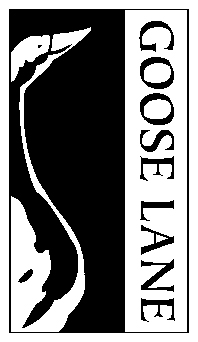Government House Halifax Excerpt
Situated on Halifax’s iconic Barrington Street, Government House is the oldest consecutively occupied residence in Canada, but the building we see today was not the first. In Government House Halifax: A Place of History and Gathering, Christopher McCreery tells the story of this historic building; its royal residents, the household staff, and the momentous — and occasionally amusing — events which have transpired within its walls; but we wanted to share an excerpt where he examines the two buildings that came before the one now standing.

The first Government House stood in the centre of the square now occupied by Province House, the provincial legislature. It was “a small low building of one story, surrounded by hogsheads of gravel and sand, on which small pieces of ordinance were mounted for its defence.” The frame, cladding and windows for the building were brought via boat from Boston, there being no cut lumber suitable for building. Completed in the fall of 1749, a short three months after the arrival of the British, Governor Cornwallis would hold the first meeting of the Governor’s Council on 14 October 1749 in the Government House Dining Room at a large oak table which had been taken off HMS Sphinx. Although unpretentious, this Government House would serve as the centre of government, place of official hospitality and residence for the Governor, if only temporarily. In 1755 this building was removed from the site to make way for a more substantial structure. Finished building materials being scarce, the first Government House was sold and pulled by horses down to the corner of George Street and Bedford Row. The building was relocated again in 1775, this time to “the beach and placed at the corner of the street leading to the steam boat landing” where it remained until 1832, when it was razed.
The second Government House was constructed in 1755, on the very same site of the first Government House, it being the centre of the growing town of Halifax. With its advantageous view of the harbour and defensible location, it remained the ideal place for the centre of government. It was during the tenure of Governor Charles Lawrence that a new two-and-a-half storey clapboard structure was erected. Lord William Campbell’s time as Governor, from 1766 to 1773, saw the construction of a “ball room at one end, and several other improvements were made to the building. . . . It was surrounded by a terrace neatly sodded and ornamented. The building was of wood, two and a half stories high.” A lively engraving of this building was rendered by Richard Shortt in 1761, depicting the building painted to appear as stone, accompanied by a number of outbuildings, surrounded by a fence and sentry boxes. John Parr, who served as Governor from 1782 to 1783 and as Lieutenant Governor (the post was reduced in rank in 1784) from 1786 to 1791, was rather fond of his official residence and emoluments associated with serving as the King’s representative in the province:
I have found everything here to exceed my expectations, have met with the greatest civility from all Ranks of People, a most excellent house and Provisions of all sorts except Flower [sic], with a very good French Cook to dress them, a Cellar well stock’d with Port, Claret, Madeira, Rum, Brandy, Bowood Strong Beer &c . . . plenty of Coals and Wood against the severity of Winter, a house well furnish’d and warm Cloths, that upon the whole my Dear Grey, your friend Parr is a happy and comfortably seated, as you could wish an old friend to be.
The house was of a substantial size when one considers it was able to accommodate almost sixty people for official entertainment, as described by the diarist William Dyott, who served in Halifax as a young Lieutenant and would later rise to the rank of General in the British Army. During the Royal Visit of Prince William Henry (the future King William IV), Dyott recorded some of the official frivolity:
In the evening at a ball at the Governor’s. We went about seven; his Royal Highness came about half after, and almost immediately began country dances with Miss Parr, the Governor’s daughter. We changed partners every dance; he danced with all the pretty women in the room, and was just as affable as any other man. He did me the honour to talk a great deal to me before supper during the dance. We went to supper about twelve, a most elegant thing, nearly sixty people sat down . . . After supper he gave five or six bumper toasts . . . We had a most jolly evening, and we retired about two o’clock.
Upon arriving in Halifax in 1792, following his appointment as lieutenant governor of the province, Sir John Wentworth took up residence in the second Government House. With the passage of time he developed an unfavourable assessment of the building. Wentworth eventually wrote to the Colonial Secretary, the Duke of Portland, complaining that the house had been built “chiefly of green wood . . . and the larger timbers generally rotten.” It would be several years before Wentworth began his campaign to have a grander Government House constructed — what would become the third, and current, Government House.
Excerpted from Government House Halifax: A Place of History and Gathering. Copyright © 2020 by Province of Nova Scotia.
Pick up your copy of Government House Halifax for more of the building’s stories, told through the expert words of its own executive director, Christopher McCreery.
